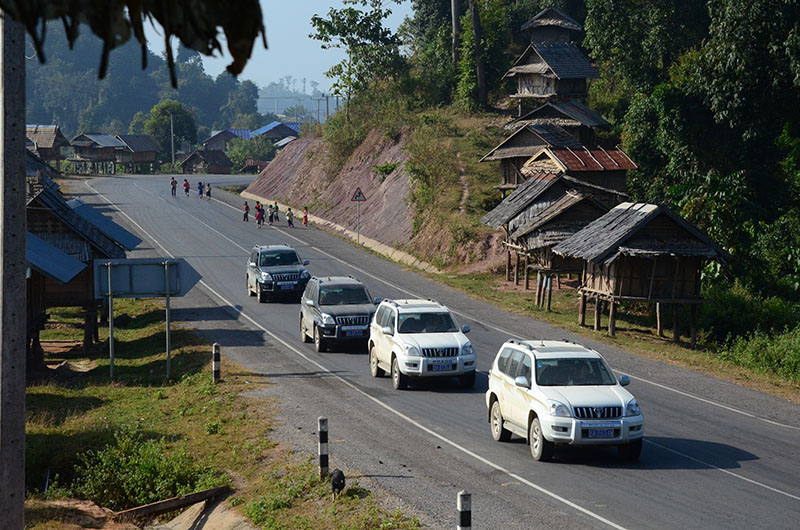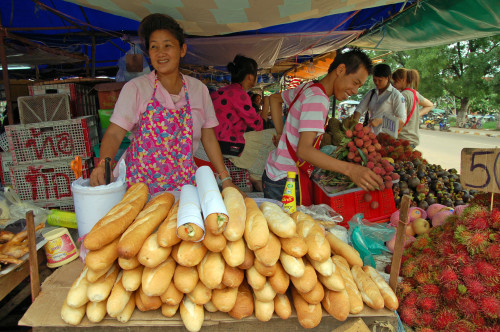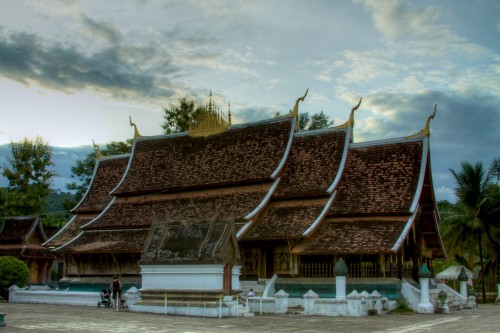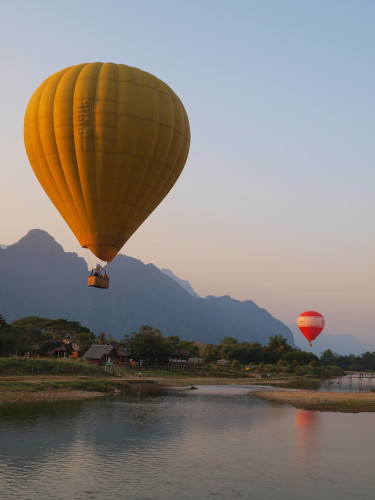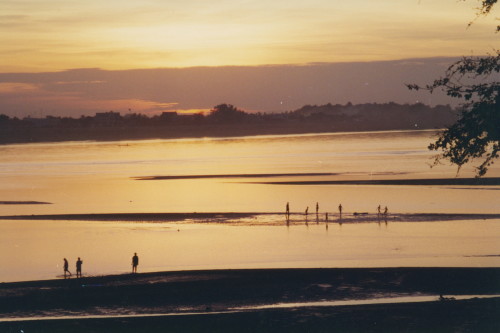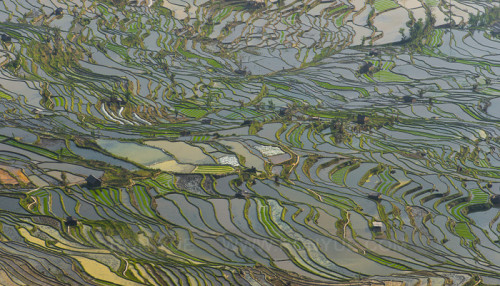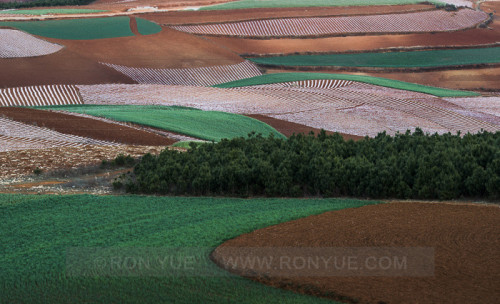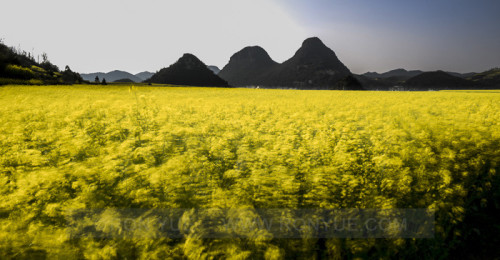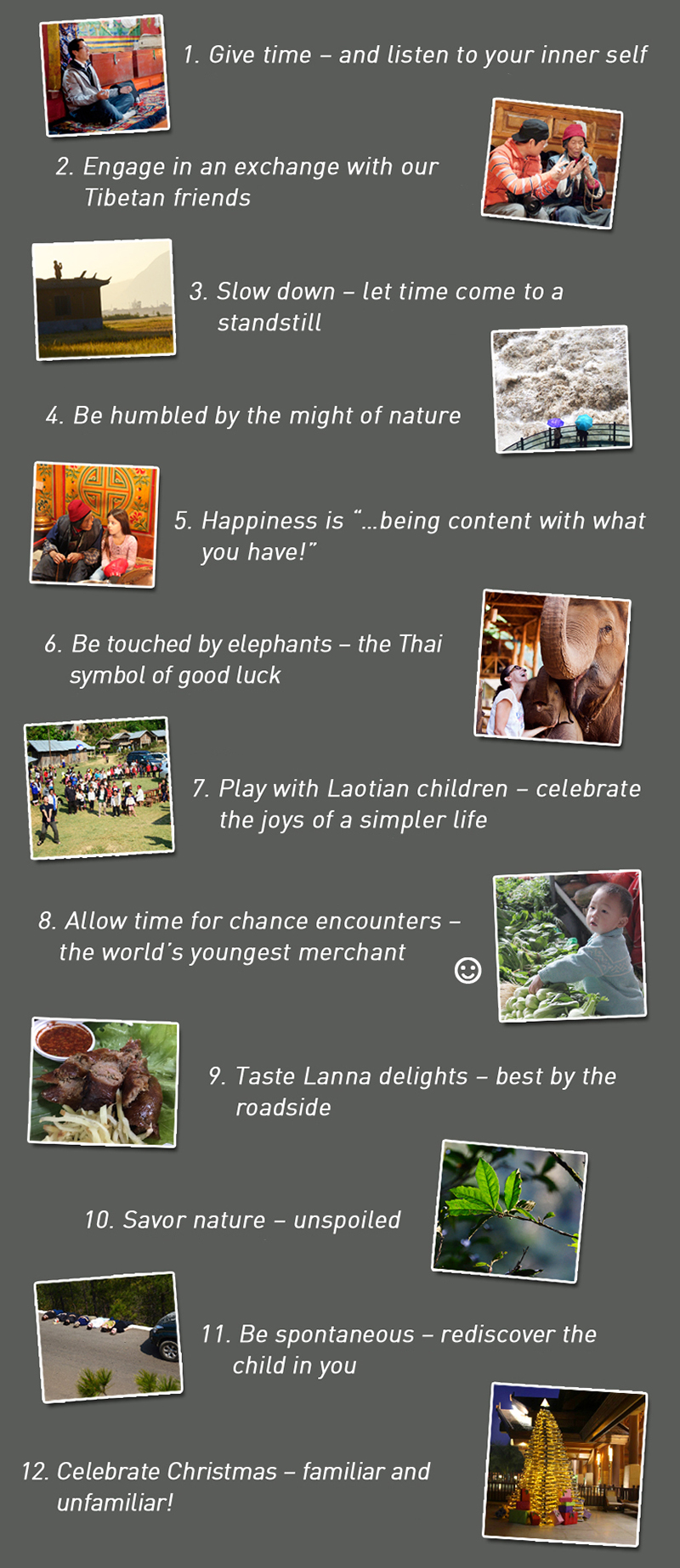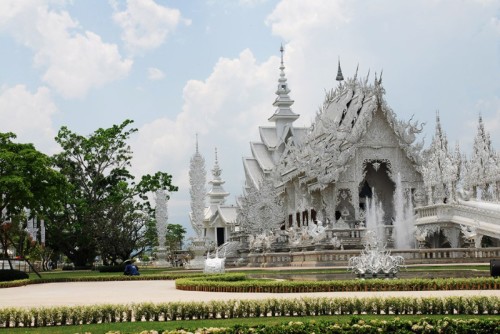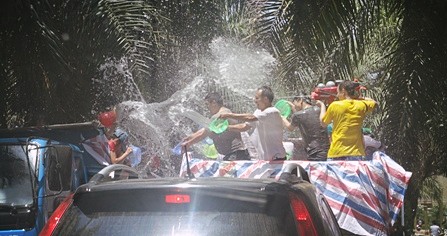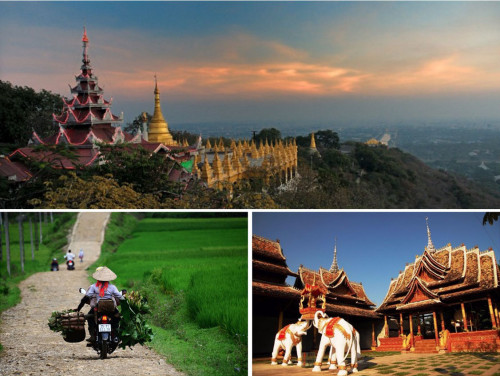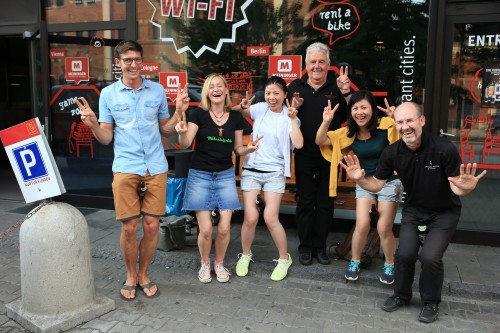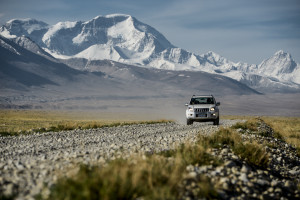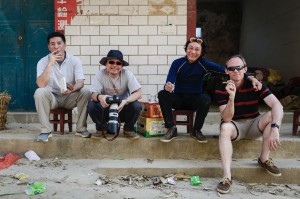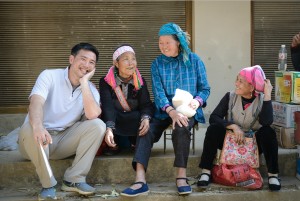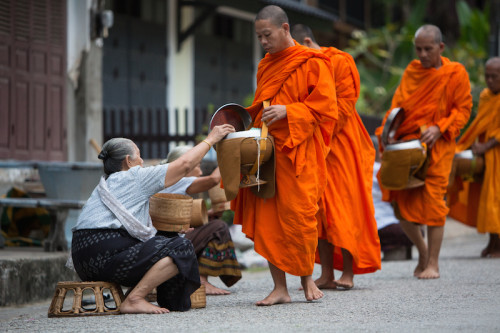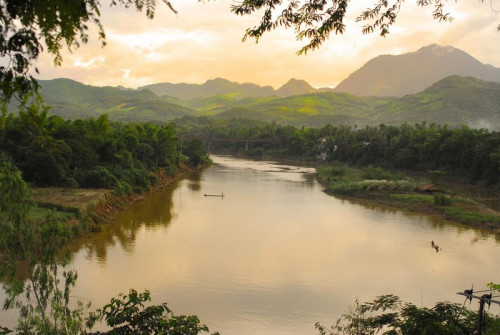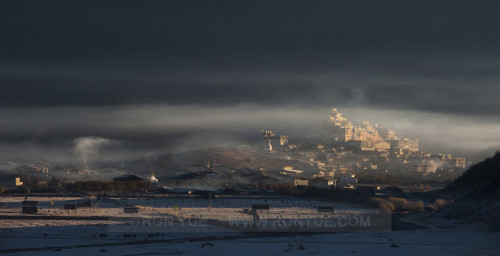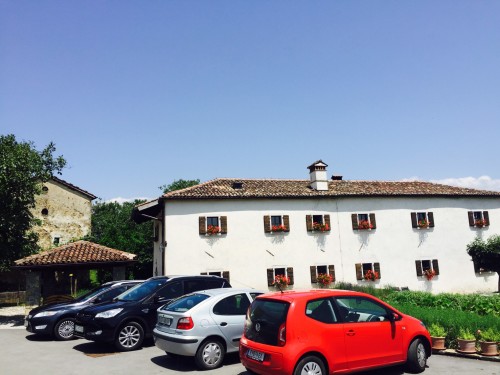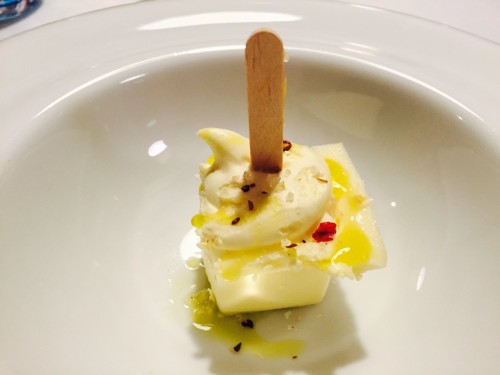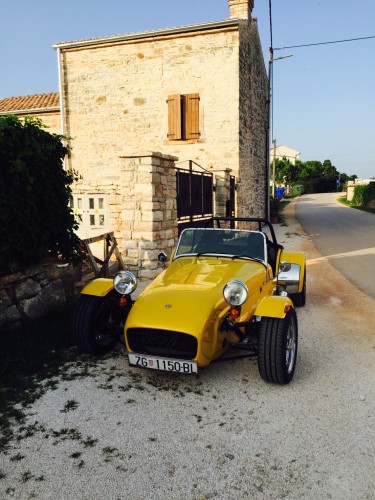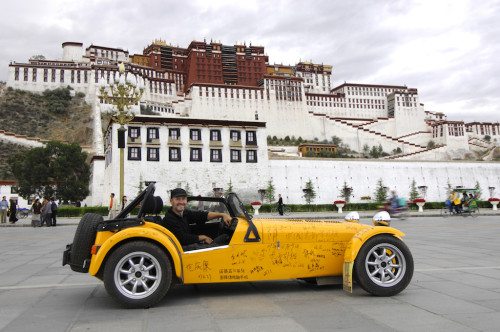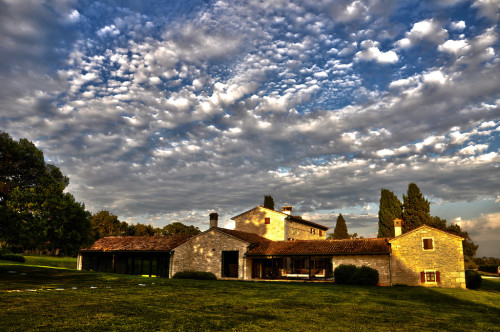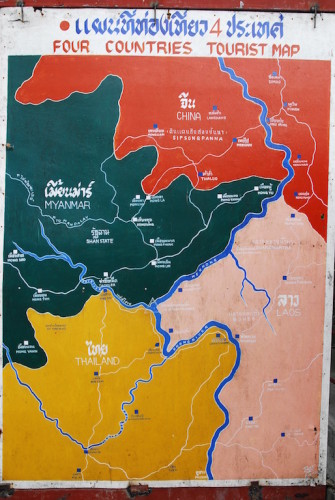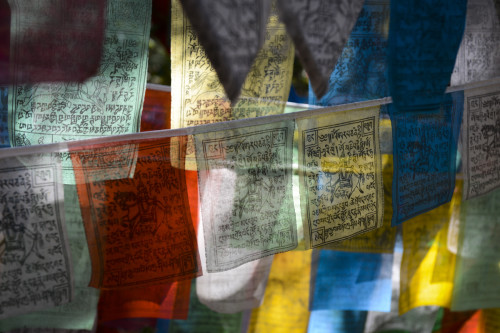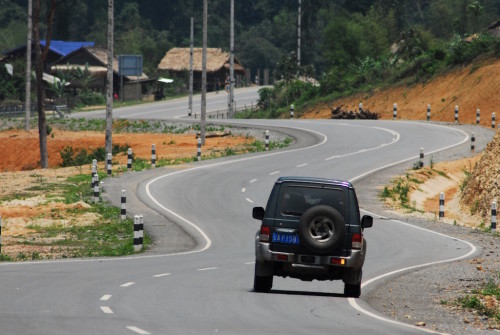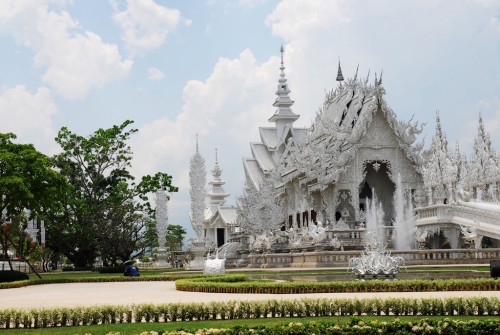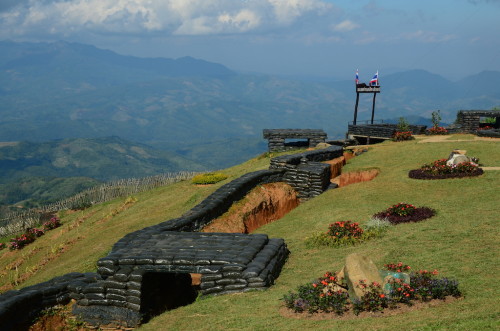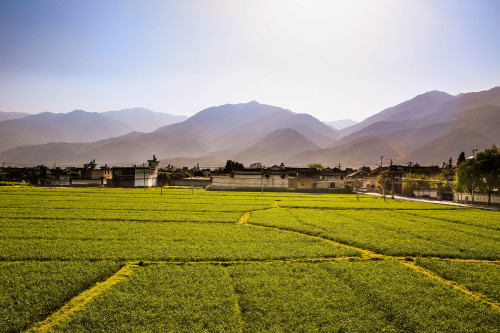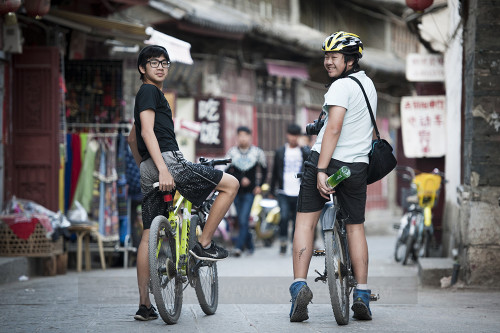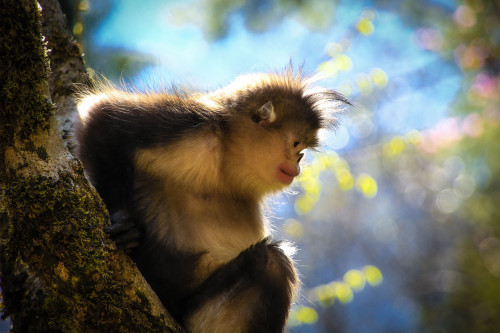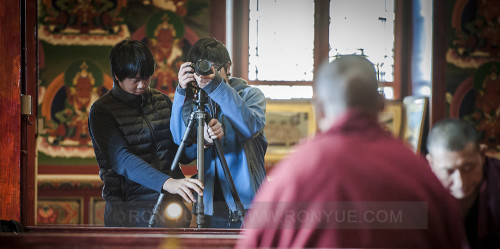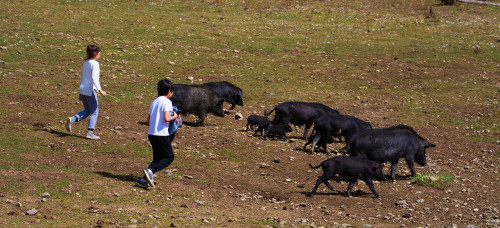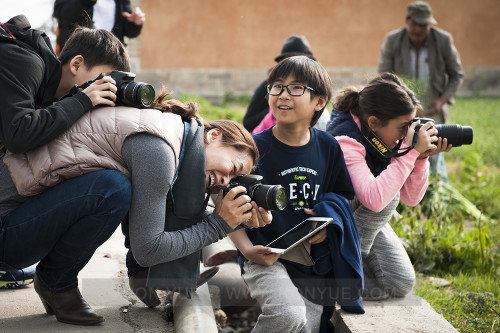Tag Archives: Adventure
Posted on 25 Jun, 2018
There’s adventure to be found both on- and off-road across Asia – indeed, some would say that any drive in the region qualifies as an adventure…
Posted on 17 Nov, 2016
On my first trip to China I kept hearing rumours about Laos, which at that time – mid-1999 – was still very much off the beaten track.
“The roads are all dirt tracks, and you’ll spend weeks getting rust-red dust out of your hair,” one fellow backpacker told me, knowingly. I had only recently discovered that such a country existed, so these survivors’ stories of epic bus journeys and remote villages combined with my near-absolute ignorance in a way that left me longing to hop over the border and explore.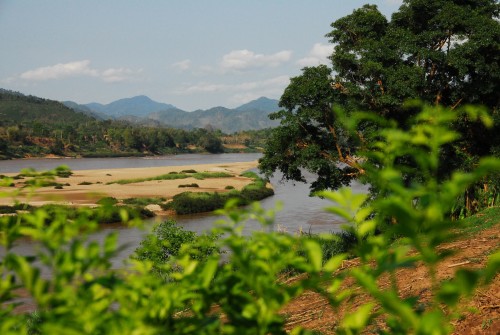
Distracted by university and work, it wasn’t until 2007 that I finally managed to arrange a trip to Laos. Escaping the greyness of a Beijing winter, my husband and I flew to Kunming, caught a bus to Jinghong and took a minibus to the border at Mohan.
We negotiated our exit from China, and took a van across the few hundred metres of “no man’s land” that separates the two border posts. The Lao checkpoint fitted my idea of how it ought to look perfectly; a series of ramshackle huts where sullen officials stamped our passports with an improbable number of rubber stamps.
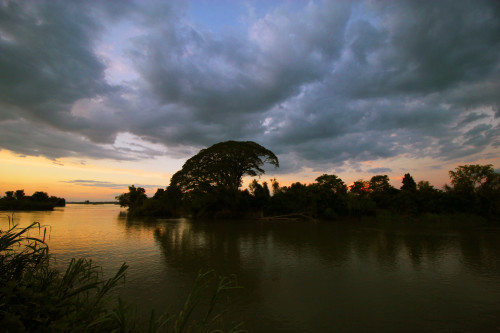 Once finished with the formalities, we clambered into a songthaew (an overgrown tuk-tuk where passengers sit facing each other on two benches inside), and drove off into the afternoon sunshine towards Luang Namtha, giddy with the excitement of being somewhere fresh and new.
Once finished with the formalities, we clambered into a songthaew (an overgrown tuk-tuk where passengers sit facing each other on two benches inside), and drove off into the afternoon sunshine towards Luang Namtha, giddy with the excitement of being somewhere fresh and new.
We spent the next five weeks travelling the length of Laos by bus and songthaew. After the border checkpoint had confirmed my expectations, the rest of the country came as a surprise; more beautiful than I had pictured, less developed than I anticipated, and more fun to explore than I had imagined.
In Luang Namtha we discovered Lao food. In a thatched hut in the rice fields, our hiking guide produced a delicious lunch of herb-filled larb salad and sticky rice all wrapped in banana leaves, a meal that we still talk about to this day. We slurped steaming bowls of rice noodles in a street stall, tried chilli-spiked river fish grilled over an open fire in the night market and breakfasted on baguettes stuffed with cheese and sausage, locally-grown coffee and plates of juicy tropical fruit. Like hobbits, we took to having multiple meals – first and second breakfasts (on one occasion finding space for a third), first and second lunches, dinner and perhaps an evening snack or two.
After travelling through the country’s beautiful, rural north, where villagers’ income seemed to derive from drying grasses to make brooms, we arrived in Luang Prabang one evening to find its colonial villas converted to chic hotels and well-heeled tourists mingling with scruffy backpackers like ourselves in the night market. By day, it was clear to see what had drawn people to this elegant town, its neat grid of streets lined alternately with ornate monasteries and faded Indochinese villas. All this lies nestled amongst forest-clad hills on a tongue of land formed by the confluence of two rivers, the town as blessed by geography as it has been by history.
Father south, the workaday town of Vang Vieng – which grew up around a Vietnam War-era US air strip – had just established itself as a backpackers’ favourite, thanks to its beautiful surroundings and a handful of bars showing Friends on loop. We floated down the Nam Song River in the shadow of jagged limestone karst hills and slept to a chorus of croaking frogs that lived in our hotel’s lily pond.
By the time we reached Vientiane, the monochrome of Beijing’s winter streets was a distant memory. It came as a shock to drive past the country’s only “factory” – a small water bottling plant on the outskirts of the capital – our first brush with anything even remotely industrial since we had left China.
The Laotian capital seemed impossibly small and quiet for a capital city. We cycled along the wide boulevards, dined at the city’s night market and drank Beer Lao as we looked out across the dark waters of the Mekong towards Thailand.
By the time we crossed the border into Thailand a fortnight later – now with survivors’ stories of our own, mostly relating to bus travel – South-East Asia’s only land-locked country had found a place at the top of our list of places to re-visit.
Little did I know that a few years later I would be regularly driving across northern Laos with groups of guests for On the Road. Over the course of many journeys, we’ve seen the Lao infrastructure gradually improve – the shabby border checkpoint has been upgraded and the rickety car ferry that we used to cross the Mekong in Huay Xai has been replaced with a new bridge. Laos is gradually becoming more developed, but, by and large, this is happening in a gentle way – there are no traffic-choked highways or big box shopping malls. The country retains its quiet charm, the Lao people still welcome curious travellers and the food still tastes as good as ever…
On the Road offers several journeys that go through Laos:
- The most in-depth exploration is our all-new “Elephants and Parasols: From Vientiane to the Golden Triangle” itinerary … launching in April 2017!
- Other itineraries that go through northern Laos include:
- “Summit to Sea: From Yunnan to Vietnam“: from the edge of Tibet to the South-China Sea.
- “From Shangri-La to the Lanna Kingdom“: from the edge of Tibet to Chiang Mai in northern Thailand
- “From Yunnan to the Lanna Kingdom“: from Kunming via the UNESCO World Heritage Yuanyang Rice Terraces to northern Thailand
Posted on 26 Sep, 2016
There aren’t many places in the world that present the traveler with such varied landscapes as southern Yunnan. From fields of rich red earth, to swaths of golden rapeseed, and glistening tiers of water-filled rice terraces etched into hillsides, it is a distinct experience to photograph these agricultural marvels for beginners and seasoned photographers alike.
The array of intense colours – red, brown, green, and white – at Dongchuan creates interesting patterns across the land that will challenge the photographer to construct an aesthetically balanced image. At Luoping, the vivid yellow flowers contrast sharply with the darker karst hills that intermingle with the fields. We will get amongst the rapeseed and explore working with depth of field and how to find and create order in a photographic environment where many different elements vie for attention. At Yuanyang, we will photograph the expansive rice terraces from a number of different locations, learning to isolate interesting sections and move beyond generic shots as well as observing the changing light conditions at sunset and dawn and their effects upon the landscape, as the sunlight creates fleeting and unrepeatable moments.
The trip, of course, wouldn’t be complete without fascinating roads to explore. The drive from Dongchuan is dramatic, climbing high along a fantastic valley with views to match, and the way out from Luoping follows meandering roads through bucolic countryside where you may be tempted to stop and soak it all in. By the time you roll back into Kunming, you will have experienced an incredible agricultural region with a complement of images to match, as well as new photographic capabilities that you will be able to take on your next journey, wherever that may be.
Posted on 23 Sep, 2016
For many of us, the end of the year is a time for taking time off to reflect upon the year past and the year to come. For some of us, it is the time to celebrate Christmas and time for giving. Giving often means the “things”. But we believe the memories of meaningful experiences last longer…
On the way from Shangri-La to Chiang Mai in Thailand, during 12 days, here are 12 gift ideas :
Join the “gift-to-yourself-and-your-family” journey: Over Christmas and New Year!
From Shangri-La to the Lanna Kingdom – December 22, 2016
-
An unforgettable way to close out 2016 and start the new year!
-
Click here for more info
-
In a nutshell
-
What?
-
Travel from Shangri-La in Yunnan via Nothern Lao to Chiang Mai in Thailand
-
Luxury, Comfort and Adventure all in one
-
Christmas in wintry Shangri-La
-
New Year in subtropical Thailand
-
How long? 8 or 12 days
-
-
We look forward to welcoming you on what will be one of the most memorable journeys of your life!
Posted on 6 Sep, 2016
We hope you had enjoyable summer months. For us, July and August were incredibly busy, not so much because of journeys, but because preparations for 2017 are in full swing! Here’s what we’ve been up to and what you can expect to come.
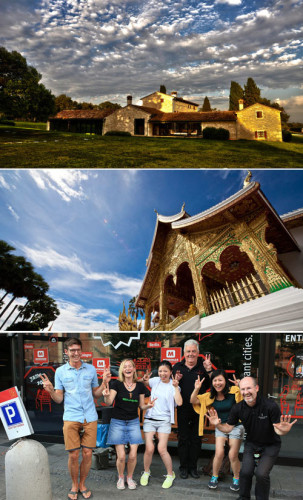 Looking back…
Looking back…
Over the summer, we published some fun reading on our Detours blog:
What a Day?! – Here is a story about a very special day on my most recent research trip in Europe
· Part 1: A holiday? Not exactly…
· Part 2: Impatient to be free…
· Part 3: I know one when I see one…
Jo has written a story about traveling from Luang Prabang in Lao to Lhasa in Tibet…a route that lies at the heart of our new, 2017 “Lands of Silk and Snow” journey (see below).
And Mareen published a story about a day in her life working at On the Road.
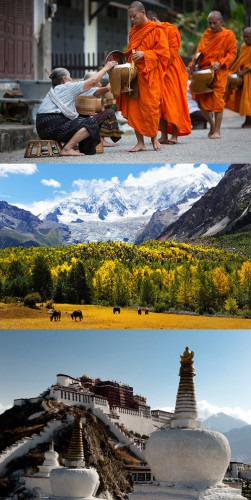 Looking forward…
Looking forward…
In September, we will be announcing two entirely new journeys for 2017.
From Lao to Tibet…
First out of the gate will be “Lands of Silk and Snow: From Luang Prabang to Lhasa”, our entirely new journey to Tibet. Imagine driving from the lush rain forests of Lao to the stupendous mountains of Tibet, from a culture inspired by one form of Buddhism to that inspired by another. For this magical journey you need 16 days, but you can shorten it to 12 days if you skip the Lao portion.
On the other hand, if you want to make it into the journey of a lifetime, then add Roads on the Roof of the World at the end to drive all the way to the Mt. Everest Base Camp. Driving tours don’t get any better than this in Asia!
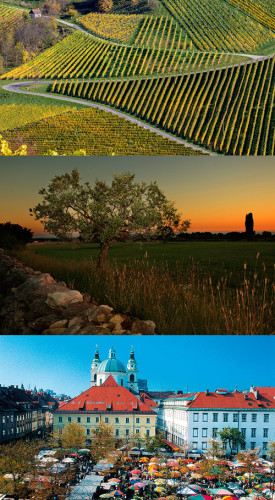 Austrian Hungarian Lands: Vienna, the Adriatic, the Alps and Prague
Austrian Hungarian Lands: Vienna, the Adriatic, the Alps and Prague
And then comes a milestone for us. After several private group journeys in Europe, here we are with our first scheduled European journey you can join in spring or autumn 2017.
If you would like to
· spoil yourself with beautiful hotels,
· eat fine meals (not always Michelin star, but the best these regions have to offer the way “mom used to cook it”),
· drive on some of the world most beautiful roads and
· immerse yourself in the landscapes and cultures of Austria, Slovenia, Croatia and the Czech Republic, there is no better journey in the world.
Travel Inspirations for the coming months…
From now until February, here are some border-crossing journey ideas for you:
-
A Burma Journey: From the Golden Triangle to the Bay of Bengal
-
Drive on back roads through this country that was frozen in time but is now undergoing rapid change…
-
November 9 and February 12
-
-
Asian Border Lands
-
Drive from Yunnan via Lao to northern Vietnam…and experience a region rich in different minority cultures…
-
November 4
-
-
A Christmas Treat: From Shangri-La to the Lanna Kingdom
-
Our flagship Asian journey from the edge of Tibet to Chiang Mai in northern Thailand is even better at Christmas and New Year.
-
It is beautiful as a family adventure, too, a journey that will be unforgettable for you and your children
-
December 22
-
All the best from On the Road Experiences for the lovely month of September!
Posted on 30 Aug, 2016
I have been working for On the Road Experiences since 2013. I started as a host…
What does a “host” do? As a journey host I oversee the whole journey from greeting guests on the first day until we all say goodbye on the last. I am responsible the service we provide and for the experiences guests enjoy; our aim is to make each journey enjoyable for all parties involved.
My role has grown over the years, and now I enjoy researching new itineraries, enhancing our existing journeys, and meeting guests before they join a trip and developing the German market. Peter gives my colleagues and I the chance to grow – sometimes it seems that every day I find myself with a new project, which makes me busy and happy!
Looking back at all the journeys I have hosted, I remember a lot of laughter and happiness, and my hard-drive is full of pictures of sunsets, beautiful landscapes and people. Two things that I can’t capture on film, though, are the hard work and long days that go into making each journey a success.
Explaining my job to friends isn’t easy, because it is not at all like being on holiday, and neither is it “just” being a tour guide. We have to work with the fact that on each journey there will be many unforeseen events along the way – hopefully these will be fun things, such as yaks on the road or coming across a colorful local festival, but they might include road closures or even landslides.
In March, for example, we got held up by market day in a small village on the way to Puzhehei, where all the roads were gridlocked with trucks both big and small.
Nobody could move until the stallholders began to clear up two to three hours later. Thinking of it now, the pictures it brings to my mind are of our guests sitting on the side of the road, relaxing – one smoking a cigar, and chatting with the market-goers.
Our drivers got stuck in, handling and coordinating the traffic while the policemen lolled about drunk on the pavement! I love that our guests and my colleagues managed to make the most out the afternoon and still find something good in a situation that wasn’t so good. It was very hot that day. As I tried to get cold drinks to keep us all refreshed, I ended up going from shop to shop as I discovered that none of the fridges were working! Finally, in a tiny shop I found cold beverages and local snacks, which I took back for us all to share.
This kind of experience is a good reminder for everyday life – of course I had all sorts of worries going through my mind: “What if we’re stuck here forever? “How long will this traffic jam last?” “What are our customers thinking?” “Will it get dark before we arrive?” “Are there any short cuts we could use?”, and so on and on… And I wished that we might have had a smoother journey on that day, but the reality is that life doesn’t always go to plan, and sometimes you just have to make the best most out of whatever happens!
Curiously, almost without fail, it is the unforeseen events, well handled, that our guests remember the most after we return home. Sometimes it’s the bends in the road that are the most memorable and meaningful!
Posted on 25 Aug, 2016
Early each morning, monks file out from the wats that line Luang Prabang’s loose grid of streets. Clasping their alms bowls, they walk, solemn and barefoot, along streets fringed with shaggy toddy palms, and past candy-coloured colonial villas and gilded temples.
Temperatures climb throughout the day, and most people retreat to the shade to sip cooling drinks and doze before venturing out again at dusk, when a vibrant night market sets up on Sisavangvong Road. Here, stallholders sell souvenirs and shake out bright silk scarves under bluish fluorescent lights as the sun sinks behind far bank of the Mekong.
As you leave Luang Prabang and set out on the road to the Chinese border, the drive punctuated by roadside villages thronging with children, any change seems faint. Three hundred kilometres away, Luang Namtha is clearly cut from the same languid, tropical cloth. Even just across the Chinese border in Xishuangbanna, people believe the same form of Buddhism, practice the same rituals, share the same traditional dress and enjoy very similar spicy-sour flavours in their food.
From Xishuangbanna, where the route of our journey Lands of Silk and Snow briefly reunites with the Mekong, the road climbs up out of the steamy basin where elephants and peacocks once strutted through the jungle, and onto the Yunnan-Guizhou Plateau. As you ascend, the air temperature drops and dries, and the vegetation changes; rubber trees and banana plantations fall away to be replaced by temperate forest and – as we approach Kunming, “the City of Eternal Spring” – fields of flowers.
North of Kunming, the pace of change picks up as you continue to climb up, past Dali and Lijiang to Shangri-La, the threshold of Tibet. From here to Lhasa our route takes us from the dramatic valleys that mark the Tibetan Plateau’s eastern fringe, crossing the Mekong again – and the Yangtze and the Salween – climbing over snow-dusted passes and swooping down through thickly forested valleys before spilling out into the broad Kyi-Chu valley on the final approach to Lhasa.
It is only by travelling overland that you can see how one land merges into the next; how the continuity of the tropics suddenly disappears as one ascends the 1500 metres between Jinghong and Kunming; how the long parallel valleys that run through northwestern Yunnan have given rise to dozens of ethnic groups and amazing biodiversity; and how Tibetan culture has overcome quite awesome geographical challenges in order to spread from Yunnan to the edge of Central Asia.
And yet while there’s change, there are also elements that bind the entire route together. From Laos to Lhasa the main religion is Buddhism – albeit of different schools. Everywhere between Dali and Luang Prabang was once part of a single kingdom in the eighth century. And the waters of the Mekong gather our journey together at several points, like a purse-string, as we travel from South-East Asia, where its waters flow, brown and stately, up to the heights of Tibet where the young river tumbles wildly out of the hills.
Pity the poor traveller who flies over all this! In our busy times of direct flights and high-speed trains, it truly is a luxury to experience a long-distance overland journey, and to see a portion of the earth’s surface up close and personal, and to meet people along your route, at every turn learning that for all that separates us, there is as much that binds us together.
Posted on 5 Aug, 2016
(Here are Part 2 “Impatient to Run Free” and Part 3 “I know one when I see one” of this trilogy.)
“You’ve got a dream job. You’re always on holiday, aren’t you?” is what we at On the Road hear all the time. I love what I do, but one long holiday it is not. So what is it like when we’re on the road?
Take one day earlier this summer, June 23, as an example. Pei Fen and I were in Slovenia researching our new European itinerary. We left Ljubljana, the country’s capital, at 8am. Our first stop was at the Postonja Caves, although we just had enough time to make a GPS waypoint – the trip down into the cave was squeezed in later in our trip. Our next stop was an hour’s drive away in Lipica, the stud farm for the famous Lipizzaner horses. From there we drove an hour out of our way for lunch in a restaurant recommended by Slovenian friends.
After an excellent lunch (more on which later), we had a long drive south and into Croatia for a 3pm appointment with Istria’s regional Director of Tourism. By then the temperature had reached 37°C, although we kept the air-conditioning turned off in our car, relishing the dry heat after weeks of wet weather. After the meeting (held in a darkened room with no air-con and cups of room-temperature water, transforming our relish for the heat into a strong desire for a/c), we revved up Little Red – the colour of our VW Up! was a shade of red that made it look as though it was trying to impersonate a Ferrari – and headed farther south to visit one of our selected hotels for an update on the progress of their renovations and a detailed discussion of the arrangements for our first group of guests.
By this time it was 7pm, but we weren’t finished yet! Pei Fen and I went to find the team hotel we had researched and booked. But after bouncing along a pot-holed dirt road, turning left, right, back, and forward again, we just weren’t able to find it. So, to Plan B! “I know of another place, it’s a bit more expensive, but never mind, let’s call them. I hope they’ve got rooms…” We shamelessly name-dropped the Director of Tourism, finagling their last two rooms, drove there***
, checked in, and headed out again, at 8pm, on another 45min drive to a restaurant I had tried before and wanted Pei Fen to experience: “Believe me, it’s awesome…and totally worth the drive!” In the event, though, the dinner took two-and-a-half-hours, because the chef wanted to showcase her best, and each dish was too salty – even the ice cream. By the time we returned to our hotel it was after midnight, and we had to be up by 5:45am for another, even longer day.
What a day! Does it still sound like a dream job? More like a nightmare perhaps. And yet this day was great because, amidst all the busyness, two experiences made it as special as any I can recall in a long, long time. One was seeing the majestic Lipizzaner horses; the other was the trip to find our lunch restaurant. Stay tuned for the stories of each of these magical experiences.
*** Believe it or not, on the way to our hotel we came across a gleaming yellow Caterham Super 7, exactly like Little Yellow (小黄) which I drove 21,000km across China in 2007.
Interested in our new itinerary? Please see here the Journey Dossier for Austrian-Hungarian Lands I: Vienna, the Adriatic, the Alps and Prague (12, 10 or 8 Days)
Posted on 6 Jun, 2016
In October 2008, my wife Angie and I spent a few days in northern Thailand. While visiting this part of the Golden Triangle, we chanced upon a rusty map of the region. “Look,” I said to Angie, “two months ago I was here,” as I pointed to Xishuangbanna, the southernmost region of China’s Yunnan Province. (‘Xishuangbanna’, 西双版纳, is the sinicised version of the Thai word Sipsong Panna ( สิบสองปันนา) and means ‘twelve thousand rice fields’.)
“So close, eh?” Angie mused, “I wonder whether you could drive from there to here. Wouldn’t that be something?!”
“You’ve got to be kidding me,” I replied, “There’s borders to cross and who knows if there’s even a road.” Having only just managed to organise our first driving journeys in China, the idea of crossing borders seemed, to me, unfathomable. In those days, whenever an idea came up, my brain was inevitably troubled by the question of how to make it happen, and from that often flowed a stream of reasons why it couldn’t be done. Angie, by contrast, is seldom bothered by such details.
Later that day I reluctantly pursued the idea with her. Wouldn’t it be something to drive from the foothills of the Tibetan Plateau in northern Yunnan down through Laos and the Golden Triangle to Chiang Mai, and to see China merge into South-East Asia, turn by winding turn? It was a powerful idea, but “how?”
***
I grew up in another Golden Triangle of sorts, in Bregenz, a small town by the eastern shore of Lake Constance where Germany, Austria, and Switzerland meet. No opium poppies there, I can assure you: the only sources of inspiration are reflections in crystal-clear lakes and the herb-scented mountain air.
Shopping in Switzerland? Lunch in Germany? Dinner in Austria? All in one day? Easy! As I child I regarded driving across borders as an everyday occurrence, but since moving to Asia I have gained a newfound appreciation for the romance – and administrative complexities – that such overland journeys can inspire.
***
Fast forward to April 2009. Angie and I have just landed in Shangri-La. The sky is overcast and snowfall has dusted the hilltops. While eating breakfast we meet the hotel manager and tell her about the journey we are about to make. Her eyes light up, “If you enjoy driving, then you must take the back road to Lijiang – let me show you…” I finish my toast in one bite and drain my coffee cup while Angie knocks back a motion sickness pill. And then we’re on our way.
The main road from Zhongdian to Lijiang is shown on my map as a thick red line. The road that we take is shown as a single pencil-thin line, snaking between the two towns. The hotel manager was right – the road is incredibly beautiful, winding over high passes before descending to the Yangtze at Tiger Leaping Gorge, where the river roars through a deep gorge beneath looming cliffs.
After arriving in Lijiang that evening, we wander the cobbled streets, bemused at the sheer number of people visiting this UNESCO World Heritage Site. From Lijiang we drive south along excellent highways to Dali, on the shore of Lake Erhai, and then to Kunming and south again to Jinghong, the largest town in Xishuangbanna.
By the time we arrive in sleepy Jinghong, with its palm tree-lined streets and Thai-style temples, it’s clear that we are on the edge of South-East Asia. The region’s main ethnic minority, the Dai, are closely related to the Thais and in the countryside we drive past groups of sarong-clad Dai women with flowers in their hair.
From Jinghong we continue our drive on another wonderful road to the China–Laos border at Mohan, where we make a bit of history: Angie and I are, according to everyone we ask, the first Westerners to drive a China-registered rental car across this border. What I had taken for granted back in the “Golden Triangle” of my youth does, indeed, mean making history here…
In Laos, Route 3 connects the China-Laos border with Huay Sai on Laos’ border with Thailand, cutting south-west diagonally across the country. At that time, Route 3 had been recently rebuilt, and the modern road contrasted starkly with the villages it runs through, where villagers’ lives seem untouched by the twenty-first century.
Later the same day we arrive at Huay Sai and take a rickety looking car ferry to Chiang Khong on the Thai side of the border. After a long day – driving in three countries and over 400 kilometres – Angie and I treat ourselves to a stay at the lovely Anantara Golden Triangle resort.
The next morning, wholly refreshed, we drive back up to the map of the Golden Triangle, where Angie had had her idea six months previously. We look at the battered map in its rusty frame before turning and gazing out towards Burma and Laos, shaking our heads and agreeing “Now, that really was something…”
Never, ever let questions of “How?” stand in way of pursuing your ideas!
Since that first trip, we now have multiple crossing-border itineraries in Asia allowing you to step into our footsteps:
- Yunnan via Laos to Thailand
- From Shangri-La to the Lanna Kingdom is exactly the itinerary that Angie and I explored in 2009.
- From Yunnan to the Lanna Kingdom starts “further down” in Kunming, the capital of Yunnan, but includes the “Mirrors of God” Yuanyang rice terraces, a must-see once in your life.
- Yunnan via Laos to Vietnam – Our Summit to Sea itinerary takes you from one UNESCO World Heritage old town, Lijiang, in Yunnan to another, Hoi An, right by the South China Sea.
- Burma – Our From the Golden Triangle to the Bay of Bengal itinerary is a magical exploration of Burma, including out-of-the-way, hidden gems and well-known, must-see stops.
Posted on 15 Apr, 2016
When we first came up with the idea behind “Adventures in Yunnan”, we weren’t sure how it would be received. We had a hunch that a family driving holiday in Yunnan could be great fun, but would anyone be adventurous enough to join us with their kids?
We put together a 10-day family-friendly journey that ran from Kunming to Lijiang in short chunks with plenty of interesting stops along as many quiet back roads as possible, and began to spread the word. Four daring families signed up for the first trip and off we went. The question now was how long would it take before the cry of “Are we nearly there yet?” was heard?
After leaving Kunming, our first stop was at Yunnan’s Dinosaur Valley, the site of a “dinosaur graveyard” where palaeontologists have unearthed hundreds of complete dinosaur skeletons since excavation began in the 1930s. Armies of reconstructed dinosaurs seem to march across the main hall, while scientists work away below, discovering yet more ancient bones. Exciting enough in its own right, when coupled with the small theme park that surrounds the museum, we had a hard time persuading anyone to leave – even with the promise of lunch ahead.
That first day’s drive ended in Xizhou, home of the Linden Centre, one of our favourite hotels in the region, and – it turns out – a great place for families with children. The second morning saw us walking through the rice fields and into the village to see the daily market, where our guests practised their Mandarin as we stocked up on Xizhou baba, a delicious local snack of fried dough smeared with rose jam. The region around Xizhou and Dali has plenty of other activities on offer, and that first trip saw us riding a cable-car up into the Cangshan Mountains to visit a Taoist temple, cycling down quiet village lanes and eating cream cakes in a German-run bakery – making it well worth the two nights we spent there.
From Xizhou we drove on to Shaxi, a small village packed with well-preserved examples of traditional Bai architecture. Our group walked out into the cornfields, picnicked and happily poked about the village streets – really a world away from the choked city streets of Beijing or Shanghai that often spring to mind when thinking about travel in China.
On leaving sleepy Shaxi, we drove up the Yangtze Valley to the tiny hamlet of Tacheng. The upper reaches of the Yangtze Valley (where the river is known in Chinese as the Jinshajiang, or “River of Golden Sand”) are wonderfully scenic, with thickly forested slopes dropping away to the sandy riverbanks. Tacheng lies at the edge of the Baimashan Nature Reserve in an area famed for its biodiversity. We made time here to drive up into the reserve to spy on its most adorable residents – troops of Yunnanese snub-nosed monkeys munching on the moss that festoons the reserve’s ancient trees.
Beyond Tacheng it was a steep climb to the Tibetan region around Shangri-La, where we petted yaks and visited a Tibetan family in their home. There, our guests had the opportunity to try tsampa, a dish of ground roast barley mixed to a paste with tea and butter. Younger members of the group announced it was “just like Play-doh” and spent a happy half hour moulding it into animal shapes, before heading off for a more spiritual stop at the huge Ganden Sumtseling Monastery.
Our last few nights were spent in the bustling city of Lijiang. One of Yunnan’s most popular destinations, this town lies in a beautiful valley dotted with pretty villages and headed at its northern end with the 5,600 metre-tall (18,360 feet) Jade Dragon Snow Mountain. Between horseback riding and watching a fantastic open-air show in the mountain’s shadow, trying to find our way through the labyrinthine old town and playing in the hotel pool, before we knew it the trip was over and we were on our way to the airport to fly home.
Did anyone – parents or children – ever ask if we were nearly there yet? No, not to my memory! As a host, this itinerary really was one of my favourites. Our younger guests revelled in being taken out of their everyday environment and exposed to so many new and interesting things. Every day my colleagues and I were asked a slew of new questions, every day we staff saw something afresh through the children’s eyes, or had our attention drawn to something we hadn’t noticed previously.
“Adventures in Yunnan” has gone on to become one of our most popular itineraries, with multiple departures each year timed to coincide with the school holidays. Recently we’ve added a photography-themed version of the journey, where our photographer Ron coaches guests through a fun series of travel photography field workshops.
One of the fathers from that first trip later told me, “Because your team took care of everything, we were encouraged to do something more daring than we would have attempted on our own, but now we’ve been inspired…” Since then they’ve been travelling all over Asia as a family – be warned, adventures as a family can become addictive!
Our family-oriented journeys include:
“Adventures in Yunnan“
“Family Adventures: Travel Photography in Yunnan” (with Ron Yue)
